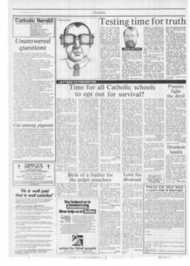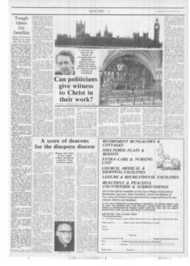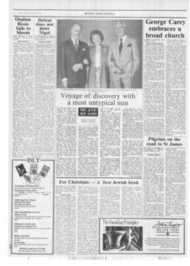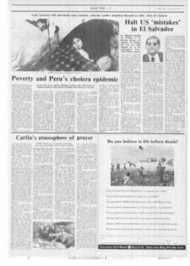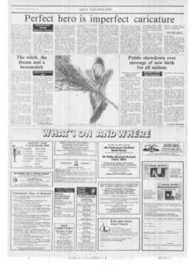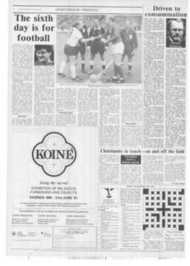Page 6, 24th May 1991
Page 6

Report an error
Noticed an error on this page?If you've noticed an error in this article please click here to report it.
Tags
Share
Related articles
Charting A Pilgrim's Progress To Compostela
Pilgrims' Mountain Stopover Restored
A Holy Year At Shrine Of St. James
The March Of Feet To A Pilgrims' Feast
Pilgrims Bound For Compostella
Pilgrims on the road to St James
The Road to Santiago de Compostella by Michael Jacobs (Viking, £14.99) Timothy Elphick THE lucky twelfth century pilgrim tramping through the villages of northern Spain towards the shrine of St James at Santiago de Compostella might have had recourse to Aymery's Picaud's twelfth century guide to the inns and watering-holes along the way, perhaps the first such guidebook ever written.
But for the modern traveller following the pilgrims' path, good guides are perhaps harder to find. Coffee table books abound, showing off hillside churches to unlikely effect against dusky Pyrennean backdrops, but portable volumes rich in reliable information about the pilgrim churches are not readily available in English.
Michael Jacobs' new architectural guide to the "camino" goes some way to redressing this imbalance, providing a useful account of the buildings at the most notable stops.
The book is sensibly sized (good news for anyone with sore feet and a backpack) and well laid out into gazetteer sections according to the towns and villages. Ample pictures of carved capitals and cloisters, ancient gateways and cathedral facades accompany the text at appropriate places.
Artistic and architectural details, ignored by most guides in all but the most withered essentials, are well reviewed. The beautiful Navarre town of Estella, extolled by Picaud as a place "where the bread is good, the wine is excellent, the meat and fish are abundant and which enjoys all the delights", is, for example, justly praised by Dr Jacobs for the magnificence of its central plaza, its palace of the kings and the "fortresslike" church of San Miguel on the banks of the Ega River.
But the bona fide pilgrim, who sets out with the scallop shell emblem of St James and staff in hands will have to use Dr Jacobs' book in conjunction with others.
Scale maps, details of exact locations of sites mentioned, and addresses of medieval pilgrim hostels still offering shelter to exhausted walkers are an essential for anyone caught unawares at a crossroads or staring at the stars without a bed for the night. References promising that "eventually you will reach" such and such a place all too often prove over optimistic on the ground.
The traveller on foot was not, however, Dr Jacobs' intended audience. For he openly admits that for him "there seems little point in walking the whole length of the route", and recommends a journey by car instead!
blog comments powered by Disqus





